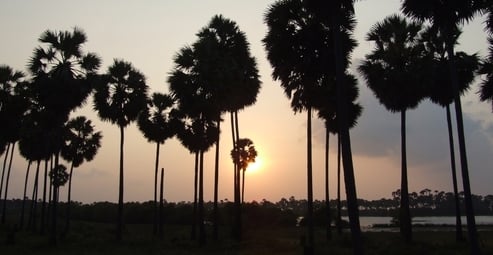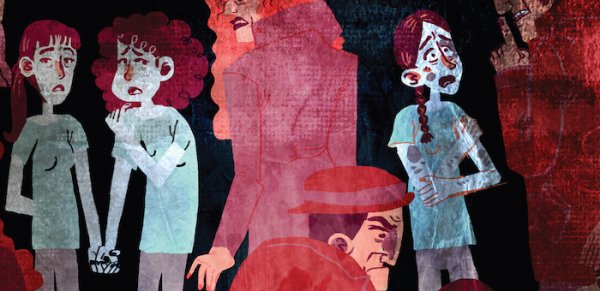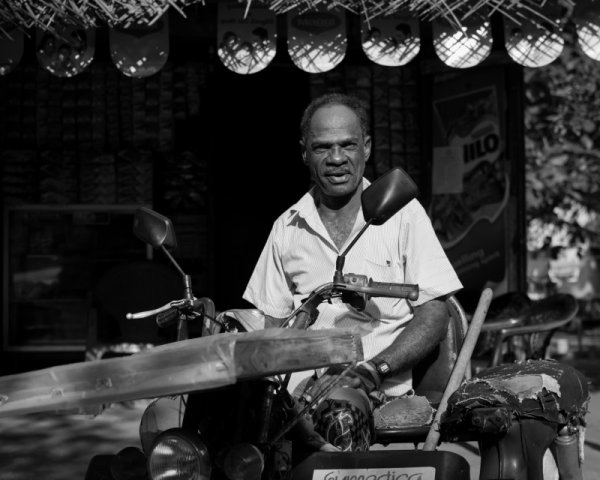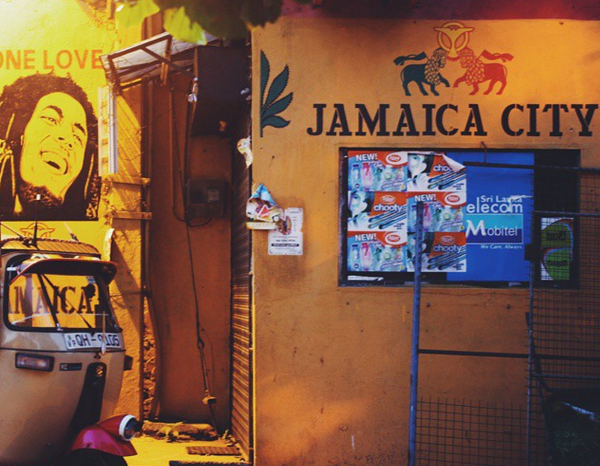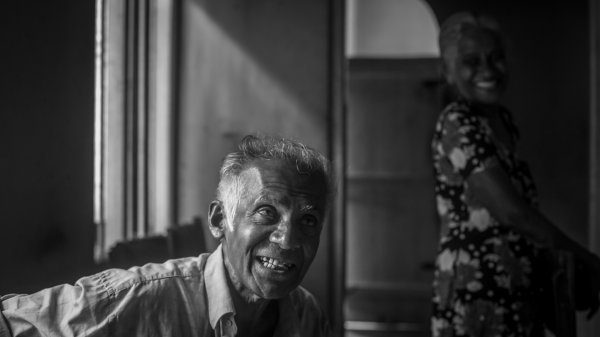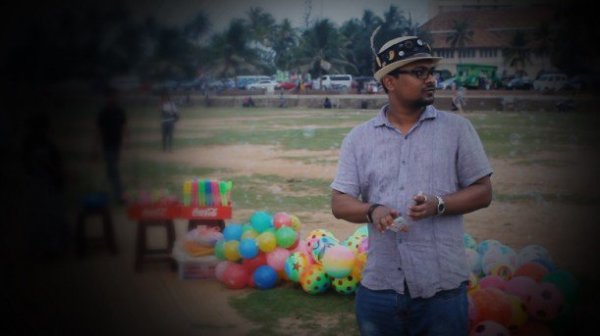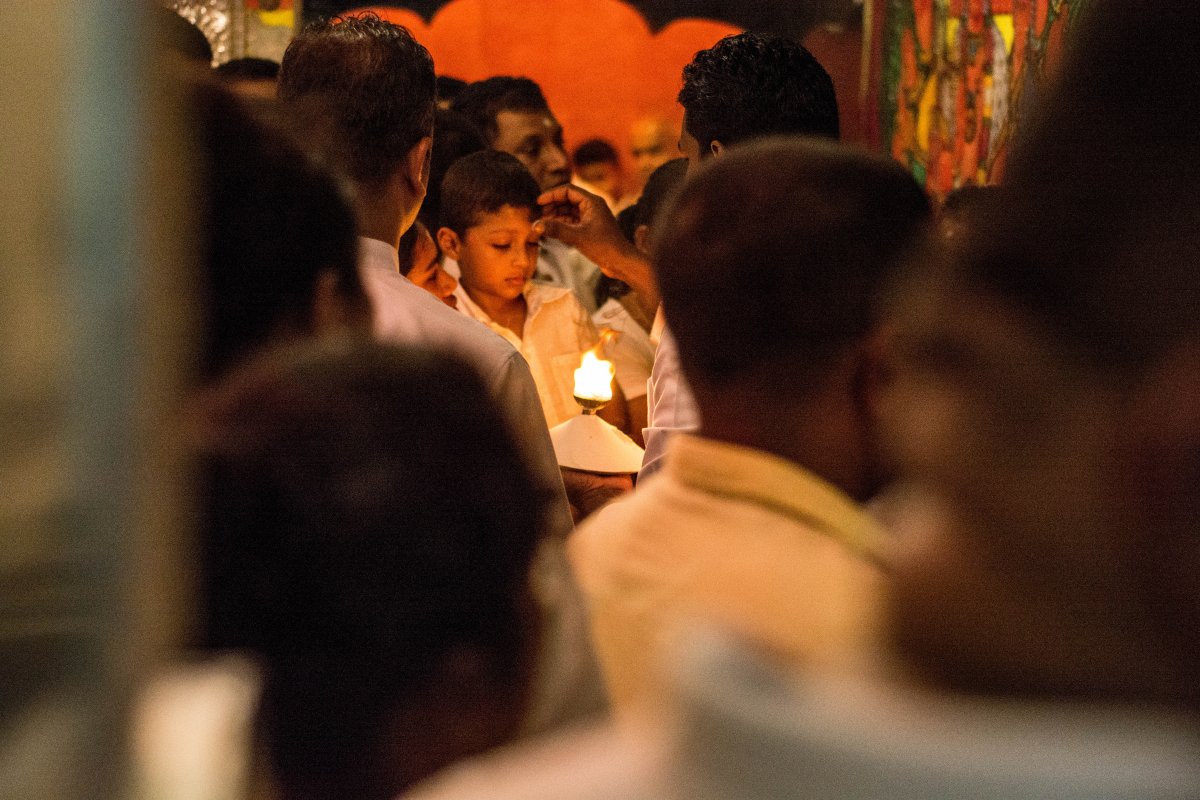
Held sacred by Buddhists, Hindus, Muslims, and Veddas, the temple complex at Kataragama is one of the holiest places in Sri Lanka. Located in the island’s far south-east (the Monaragala district of Uva province), people have been pilgrimaging here for 3,000 years. The two month long Pāda Yātrā (an annual walk from Jaffna during May, June, and July) is a tradition inherited from the indigenous Vedda people.
While we were not brave enough for two months in the jungle, we took a bus to Kataragama to observe the vibrant evening puja and find out how four belief systems merged and harmonized in this most sacred of spaces.

Buddhist monk Ven. Sudevalankara Thero arrived in Kataragama on Thursday, January 11, from Maharagama. He had visited here over 100 times in his life but had not done so in the last four years. This morning he woke up and had a sudden compulsion to visit the Kirivehera (the large white dagoda in the background). Ven. Thero said that it was on Buddha’s third trip to Sri Lanka that he visited Kataragama, and that is why it is held so dear by Buddhists today.

Kirivehera Dagoba: the impressive 29 m dome is thought to have been built during the reign of King Mahasena (AD 276-303), who also constructed the Jetavanarama Dagoba in Anuradhapura.
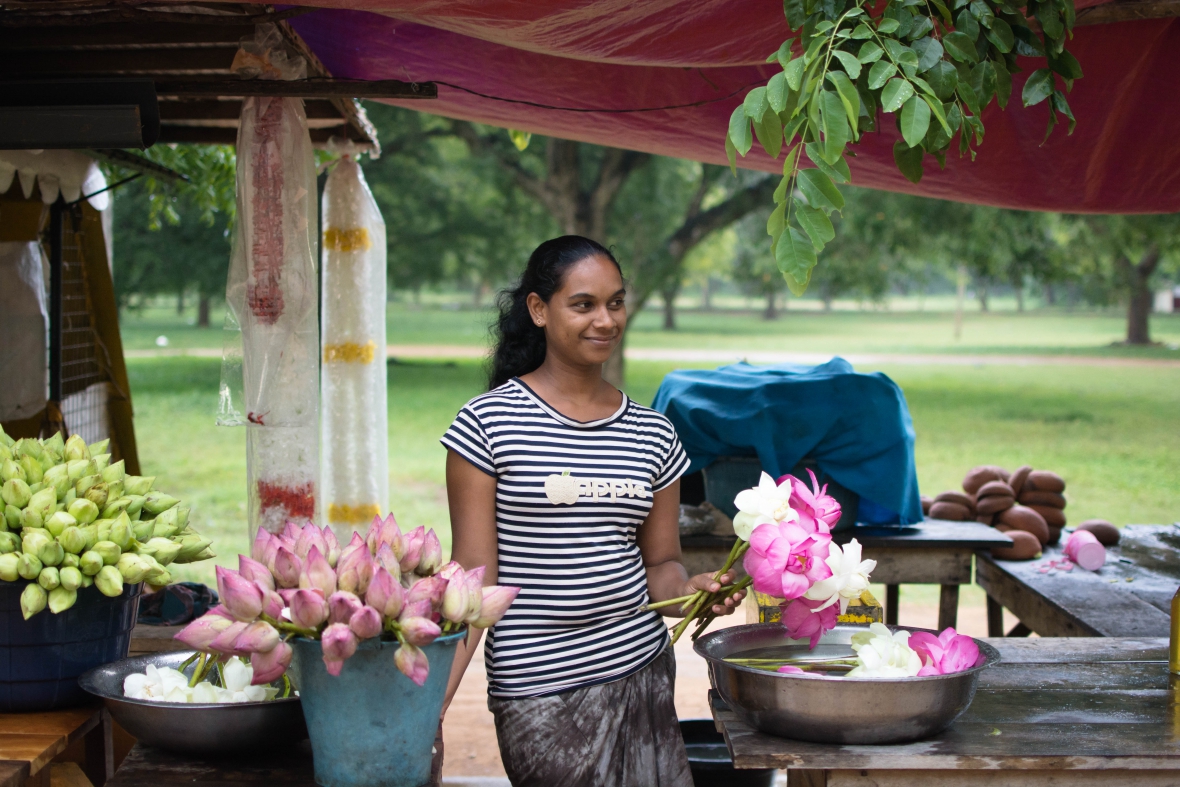
Along the main thoroughfare between Kirivehera and Maha Devale, many street stalls sell natural products for worshipers to offer to the temples and Gods. Chamila has been selling flowers in the complex since she was ten years old. Her flowers come from Hambantota, Mahiyanganaya, and Tangalle. She also sells candles made of coconut oil and elengi (sesame oil).

Lord Buddha is reported to have once said: “As a lotus flower is born in water, grows in water and rises out of water to stand above it unsoiled, so I, born in the world, raised in the world having overcome the world, live unsoiled by the world.” In other words, Buddha is saying we need to “rise and bloom above the murk to achieve enlightenment”.
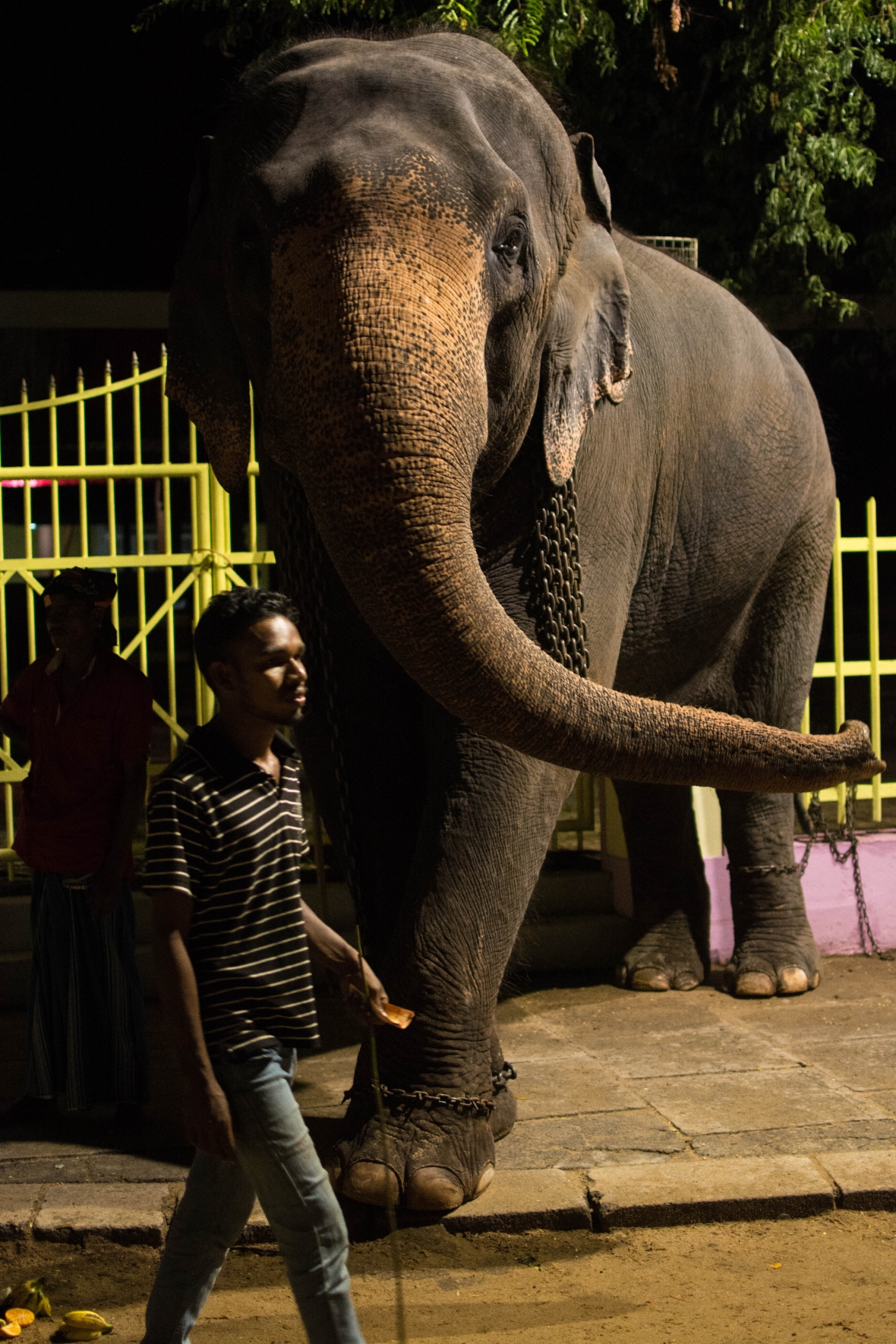
Temple elephant, Nandimithra, and the mahout, Supun, have been together ten years. Supun told us that worshippers believe god’s power is bestowed upon Nandimithra as he is under the protection of the temple.
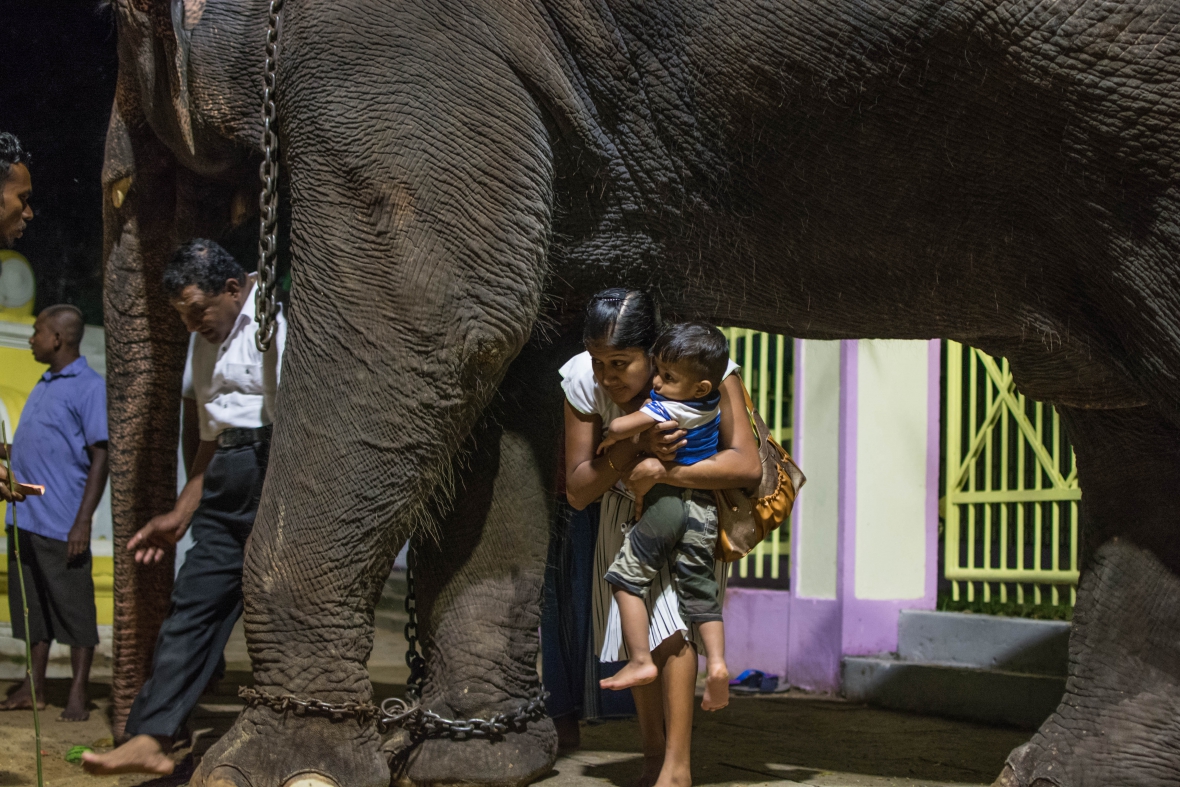
People, therefore, believe that to avoid bad luck and illness, one should walk in a circular motion under the elephant’s belly and round to the front legs and head, three times. This mother yelled to Supun as she finished her third round: “God will bless you! My child doesn’t speak and I have no money, but you let me pass underneath”. Supun normally charges Rs. 100 to pass under the elephant. He uses the money to pay for Nandimithra’s food.
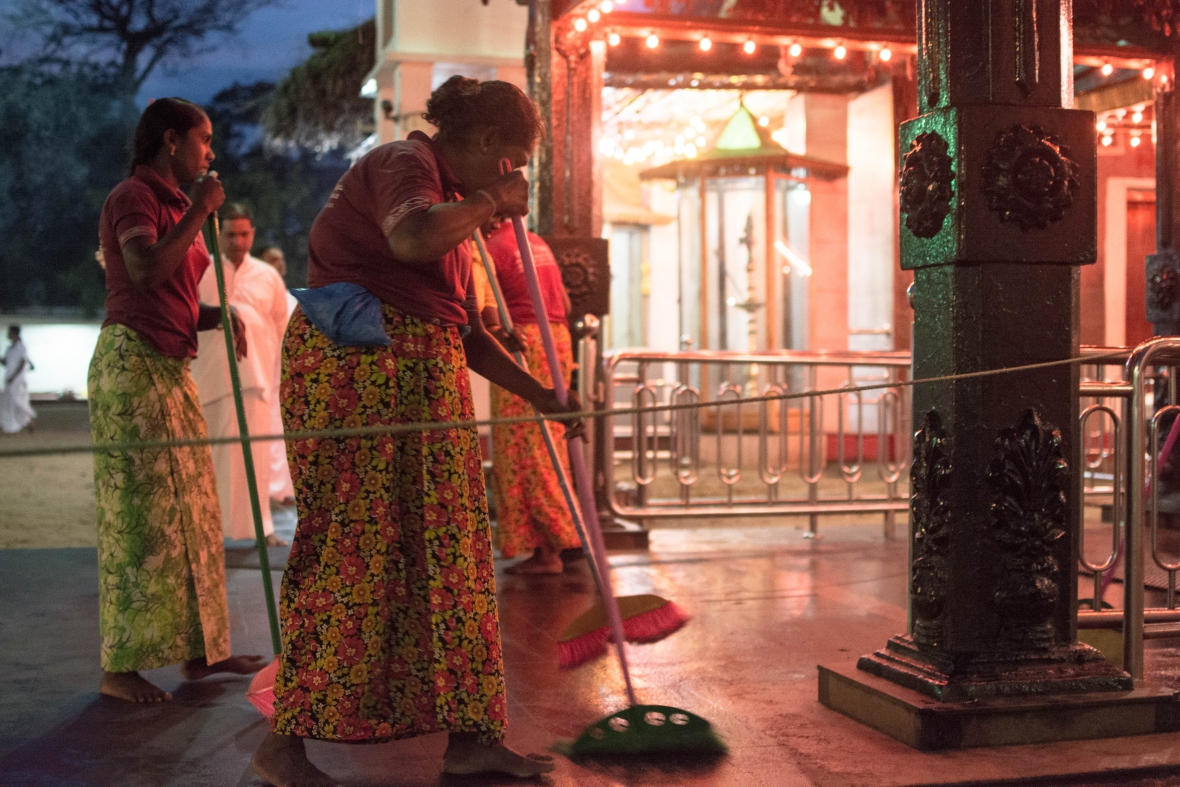
In preparation for the evening puja at 6.30pm, as the sun goes down, women sweep the grounds around Kataragama’s most important shrine: Maha Devale. There are also pujas at 4.30 am and 10.30 am every day (except there’s no 4.30am offering on Saturdays).
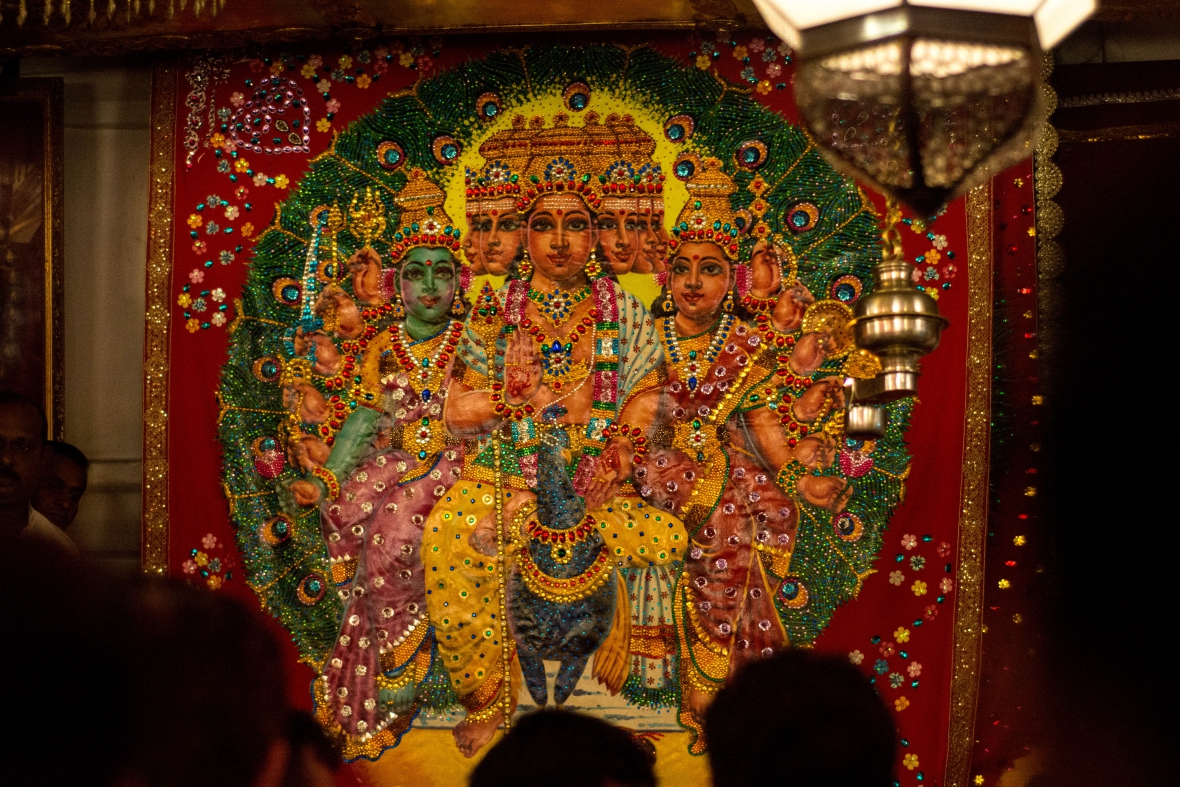
Inside the temple is a shrine dedicated to the six-faced, 12-armed Hindu war god, Murugan (Skanda), also known as Kataragama deviyo.
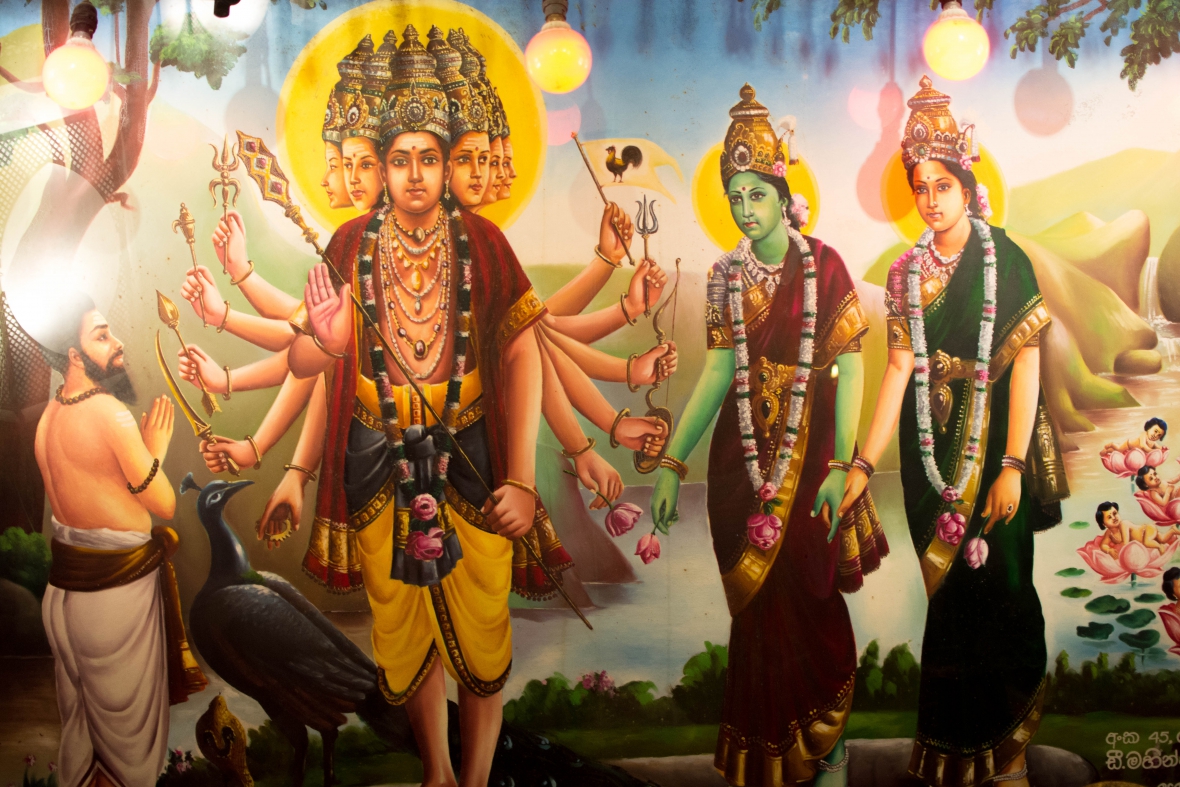
According to legend, Murugan moved from the Himalayas to Kataragama after a dispute with his wife Teyvanai. Here he fell in love with Valli, a beautiful Vedda princess. Later, Valli became a deity, too and now Vedda people come to the temple complex to venerate both Kataragama deviyo and Valli.

As the myth goes, his first wife Teyanai sent Murugan’s teacher, Muttulingam Swami, and a Muslim called Mohammed Navi to search for her missing husband. When they found him and eventually brought Teyanai to Sri Lanka, Kataragama built a mosque for Mohammed Navi, giving the location special reference for followers of Islam, too.
The message was that Lord Murugan, in his form as Kataragama, is open to everyone, irrespective of caste, creed or social status. His grace is given to all in abundance.

The loud ringing of bells during the puja is to drown out the sound of Teyanai’s crying when she learned of Murugan’s new wife.

